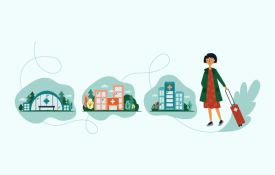-

New Content From Perspectives on Psychological Science
A sample of articles on mind wandering, the implicit association test (IAT), mystical experiences, theory of mind, and health.
-

Want Healthier Americans? Shift the Focus From “Personal Choice”
Popular narratives centering on “free choice” and “personal responsibility” might contribute to high rates of ill health and poor well-being in the United States, suggests a recent article in Perspectives on Psychological Science. The authors, Cayce J. Hook and APS Fellow Hazel
-
Do Not Trust That Stranger’s 5-Star Review
Last Saturday, I was desperate for Mozart sheet music. It had to be for piano, and it had to be easy to play. Out of 84 options on Amazon, a book with 4.7 stars caught
-

Teaching Current Directions in Psychological Science
“Building Better Decisions Through Choice Architecture” by Beth Morling and “The Art of Memory: Drawing Can Improve Memory” by Gil Einstein and Cindi May.
-

Context Shapes Choice of Healthy Foods
When choosing between indulgent and healthy foods, your pick may depend on what other foods sit nearby on the grocery shelf.
-

New Research From Psychological Science
A sample of new research exploring: judgment, uncertainty, and optimism; processing of object-scene relations; and orienting biases in visual attention.

